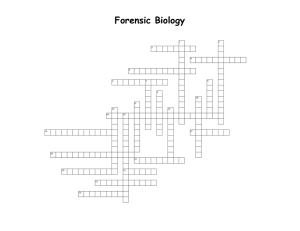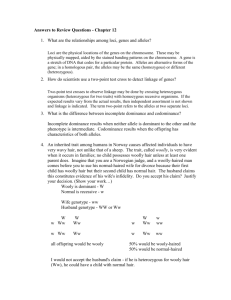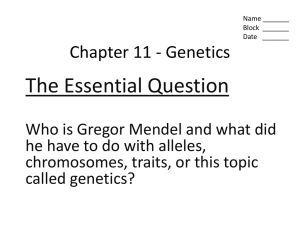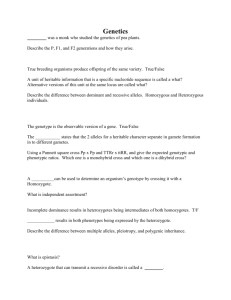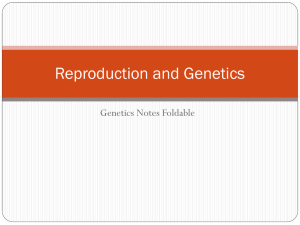Active Site set of substrates bind.
advertisement
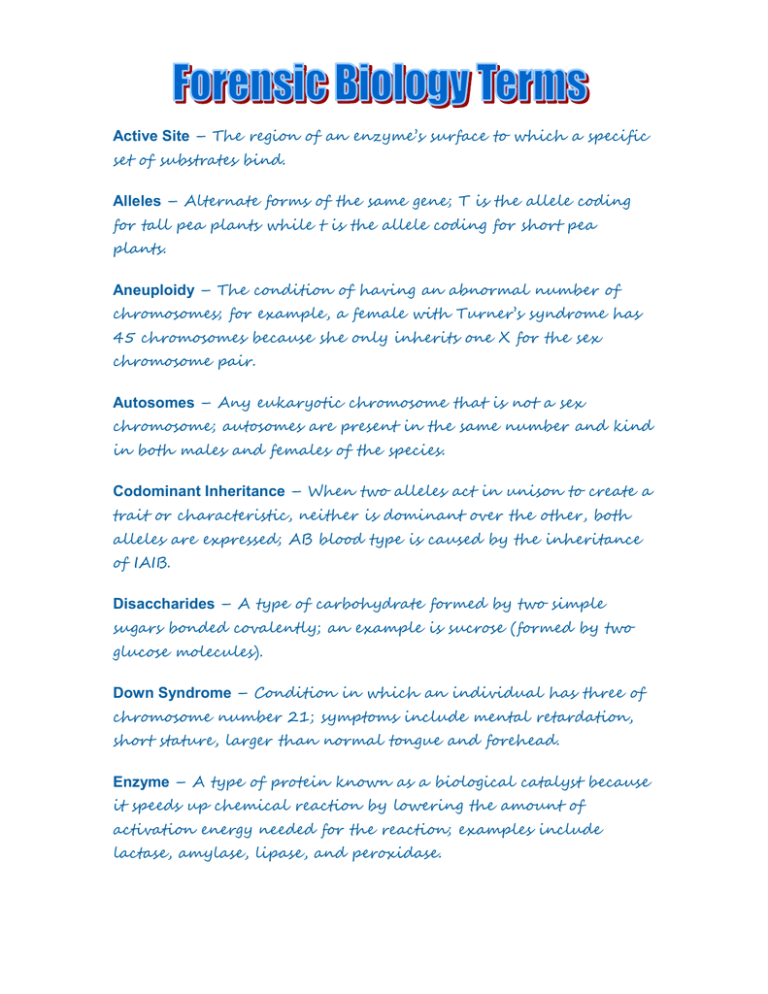
Active Site – The region of an enzyme’s surface to which a specific set of substrates bind. Alleles – Alternate forms of the same gene; T is the allele coding for tall pea plants while t is the allele coding for short pea plants. Aneuploidy – The condition of having an abnormal number of chromosomes; for example, a female with Turner’s syndrome has 45 chromosomes because she only inherits one X for the sex chromosome pair. Autosomes – Any eukaryotic chromosome that is not a sex chromosome; autosomes are present in the same number and kind in both males and females of the species. Codominant Inheritance – When two alleles act in unison to create a trait or characteristic, neither is dominant over the other, both alleles are expressed; AB blood type is caused by the inheritance of IAIB. Disaccharides – A type of carbohydrate formed by two simple sugars bonded covalently; an example is sucrose (formed by two glucose molecules). Down Syndrome – Condition in which an individual has three of chromosome number 21; symptoms include mental retardation, short stature, larger than normal tongue and forehead. Enzyme – A type of protein known as a biological catalyst because it speeds up chemical reaction by lowering the amount of activation energy needed for the reaction; examples include lactase, amylase, lipase, and peroxidase. Genotype – The genetic makeup of an organism; the pea plant has TT for the height gene. Hair Cortex – The layer of the hair shaft containing pigmentstoring cells. Hair Cuticle – The outermost layer of the hair shaft. Hair Root – The part of the hair below the epidermis. Hair Shaft – The part of the hair above the epidermis. Karyotype – A picture of an individual’s chromosomes taken with the help of a microscope when the cell is actively dividing. Lock-and-Key Theory of Enzyme Function – The theory that an enzyme fits into a substrate site like a lock into a key as the result of the respective shape of the enzyme and the specific substrate site at which it is to operate. Monosaccharides – A type of carbohydrate called a simple sugar; the most common are glucose and ribose. Multiple Allele Inheritance – When there are more than two alleles inherited for a given same gene; such as IA, IB, and i for the blood type gene. Organic Molecules – Carbon-based molecules found in living things (e.g., carbohydrates, proteins, lipids, and nucleic acids). Peroxidase – An enzyme that speeds up the breakdown of hydrogen peroxide into water and oxygen. Phenotype – The physical appearance of an individual organism as opposed to the general characteristics of the species to which the organism belongs. Polysaccharides – A type of carbohydrate formed by linking many monosaccharides to form a long chain; glycogen, starch, and cellulose are examples. Protein – A chain of amino acids joined by peptide bonds; examples include structural proteins like keratin and collagen, as well as functional proteins such as enzymes. Substrate – In the present context, a molecule broken down or otherwise operated on by an enzyme. Turner’s Syndrome – A condition in which a female has only one X for the sex chromosomes; symptoms include short stature, webbed neck, and reproductive sterility. XYY "Super" Male – A male with an extra Y chromosome; symptoms include tall stature, and higher than average testosterone production. Control Test – Generally, a test of a system that includes all of the same features as the experiment system, except for the feature being tested/studied; a test run that acts as a comparison.
